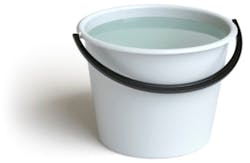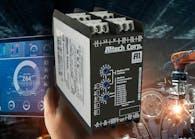In order to get the most accurate results, samples need to be collected properly. While every lab may have their own set of sampling standard operating procedures (SOP), there are some common best practices for collecting samples. This article will go over some basics when collecting samples, like bottle type, preservation techniques, holding times, sampling techniques, sampling points and documentation. Before getting into sample collection and field practices, determine if samples need to meet regulatory requirement. If samples are to meet regulatory requirement, the method to be used may be dictated by the regulation. It’s important to get a good idea of the scope of the project, including sampling location/conditions and what methods will be used, because this will usually dictate how many bottles will need to be filled and what time constraints you are dealing with.
Sample collection bottles and materials
Before collecting samples, make sure you have all the proper bottles, field equipment and preservatives, such as ice. There is nothing worse than being unprepared in the field, so plan ahead as much as possible. It’s best to obtain sampling bottles from the lab running the analysis, as some bottle sizes and preservatives used can differ slightly.
The methods that will be flowed will determine the type of bottles used. For example, samples for metals’ analyses are usually collected in plastic bottles, while analyses for volatile organics and pesticides are collected in glass containers. Bottles used to collect samples for bacteria should be sterilized. The size of the container is important to ensure you have enough sample to run the analysis needed. Container size may also be affected by regulation, as larger samples may be needed to obtain lower detection levels.
Certain analysis like volatile organics and radon require vials that are to be filled leaving no head space, which keeps these analytes dissolved in the water, preventing them from escaping into the air. Additionally, some analyses require samples to be collected in amber colored bottles. These darker bottles are for analytes that break-down in sunlight, which helps keep these contaminants from breaking down while in transit to the laboratory for analysis.
Preservatives and holding times
Depending on the analysis, there may be chemical preservation. A common preservative used is sodium thiosulfate, a dechlorinating agent, used to stop any chlorine reactions. Sodium thiosulfate is used for bacteria analysis and volatile organics. Many laboratories will provide pre-preserved bottles wherever possible, but some analysis requires preservation in the field. Volatile organics should be further preserved in the field using hydrochloric acid, which is used to reduce any microbial activity that could reduce the contaminants while in transit to the lab.
The most common type of preservation is temperature; most analysis requires samples to be kept cool, arriving at the lab between four and six degrees Celsius. The cooler temperature helps contaminants from breaking down during transit. Holding time is another important consideration — this refers to the amount of time from collection to when the analysis beings. Regulatory samples need to meet these holding times and recognized holding times may vary from state-to-state. For example, most states will recognize coliform bacteria testing as a 30 hour holding time, while some states require a stricter six hours. Keep in mind holding times when planning what time samples should be collected.
When shipping samples, you will want to collect your samples later in the afternoon and ship them the same day via overnight delivery to allow for samples to arrive at the laboratory in time and within temperature requirements. Temperature control can be tricky, especially when sampling in the heat of summer. In the summer, it becomes critical to sample as late as possible and have samples delivered as early as practical to minimize transit time. You will need to pack the samples in ice, and you may want to consider using a combination of wet ice and gel packs. Sometimes this may not be enough, especially if sampling in heat that is over 90° F. If sampling in extreme heat, you can cool samples in an ice bath before shipping, while figuring in an hour or two to adequately chill them before shipping.
Sampling techniques
When collecting samples, you will need a representative sample and, while sampling well water, you should run the water for several minutes so that you are getting water directly from the well and not from a source that has been sitting in a storage tank or pipes. Before running water, remove any aerator from the spigot. A good way to determine if you have run the water enough is to use onsite measurements like pH, temperature and conductivity. Take measurements every two to three minutes, and once you get three consistent measurements in a row, you are ready to collect samples.
Once you have allowed sufficient water to flow, you are ready to collect samples. You should conduct this process in order, starting with samples for any field parameters and then moving on to any light gases, such as volatile organics or methane, ethane and propane. Next you collect any samples that do not require filtration or preservatives like metals, some inorganics and semi-volatile organics. When testing for dissolved metals, you will need to field filter samples, and these varieties should be collected next. Finally, you should gather bacteria samples. Before sampling bacteria, turn the water off and disinfect spigot.
Bacteria
There are a variety of ways to disinfect a sampling point; the easiest and most effective way is to use an alcohol swab. If the spigot is metal, you can use a flame; however, you should not use a flame, if you suspect methane. You should not collect a bacteria sample from a gooseneck faucet as these are difficult to fully disinfect and you may not get a representative sample.
When collecting the bacteria sample, consider wearing gloves to minimize potential contamination. You should also use a sterilized, sealed pre-preserved bottle — do not use if the seal has been broken.
The best practice when gathering the sample is to hold the cap while filling the bottle. You do not want to set the cap down or touch the inside of the cap or bottle as you could potentially contaminate the sample.
Sampling toolkit
If you sample on a regular basis, put together a sampling kit. A good sample kit would include supplies and equipment to run any onsite analysis, such as meters to measure pH, temperature and conductivity as well as standard solutions to properly calibrate equipment. Carrying tools, including a wrench for removing difficult aerators, screwdrivers and a flashlight, can be helpful in some situations. Supplies, such as gloves and alcohol swabs, can also be stored with your other sampling equipment.
Sampling points
Where you collect the samples will depend on the objective of the analysis. For instance, if you are collecting a sample to establish a baseline of water quality for a private well, you should gather the sample prior to any treatment devices. It’s important to inspect for treatment equipment because many homeowners will not recognize a sediment filter as water treatment. In most cases, collecting a sample from the kitchen sink is recommended, unless there is a specific water quality issue being experienced at a different tap, like a bathroom sink. To determine if treatment equipment is functioning, you may need to collect "before" and "after" examples to get the best idea of how the equipment is operating. To meet a particular regulation, where you obtained the sample is usually specified.
Documentation
Documenting when you are collecting samples is critical to record information such as the date and time collected so the laboratory can determine if samples are being run within proper holding times. It’s a good idea to include identification, whether noting an address or a more specific location like the kitchen sink. Having the sample identification on your reports will be helpful when comparing results from year to year. When submitting samples to a lab, a chain of custody form will need to accompany the sample to indicate what analysis needs to be run, the date and time collected, sample identification and who assembled the sample. In addition to filling out a chain of custody, it’s a good idea for samplers to keep a field notebook. In the field notebook, you can record any onsite analysis you run, observations concerning water quality such as odor or discoloration, weather conditions, the sampling site and anything else that may be important to note.
Every sampling project is different. You should secure as many details upfront to prepare as much as possible in advance. Working with a good laboratory is crucial because it will provide you with the bottles and preservatives as well as with guidance on proper sampling techniques. A reputable lab can also advise you on the best sampling points depending on the objective of the testing. For the most part, collecting samples is easy. You just need to take the time to think the details through.
Marianne R. Metzger currently works for Certified National Analytics (CNA) Environmental, New Jersey Analytical Labs, Smith Environmental, International Hydronics and TestMyWater.info, providing various testing services for residential, commercial and government regulations. Most of her career has been spent working for laboratories with specialization in water treatment testing. She also worked for Accent Control Systems as a sales engineer. Accent Control Systems is a company that provides equipment for in-line and handheld analyzers, flow meters and chemical feed pumps to be used in water, wastewater and other fluid applications. Sales engineers worked in the field by educating clients about products and helping to diagnose system and sizing requirements.


